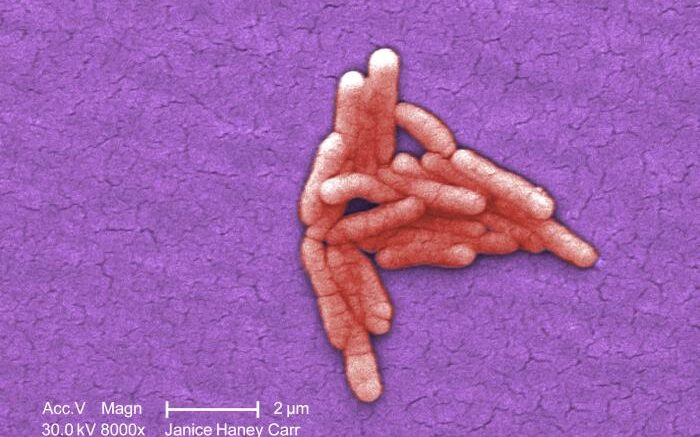Like any other manufactured food product, chocolate can be contaminated if key ingredients or processes break down. In a presentation in a pre-ECCMID day for this year’s European Congress of Clinical Microbiology & Infectious Diseases (ECCMID), Dr. Johanna Takkinen, principal expert for food- and waterborne diseases at the European Centres for Disease Control and Prevention (ECDC), will discuss the drama as the story unfolded, and the lessons learned from an outbreak of Salmonella Typhimurium in Kinder Chocolate Eggs traced to a Belgian chocolate factory.
”If not for clear and co-ordinated action across Europe and beyond, there may have been many thousands more children falling ill, and potentially many deaths,” says Takkinen.
Authorities in the UK (the UK Health Security Agency [UKHSA]) first raised the alarm in ECDC-hosted alert platform EpiPulse on Feb. 17, 2022, reporting a cluster of 18 children reported ill with monophasic Salmonella Typhimurium infections since January 2022. Of these, seven were hospitalized and five of the seven had bloody diarrhea, a serious symptom.
“Preliminary interviews of first cases indicated Kinder chocolate products as a possible vehicle of infection. Several countries then began reporting an increasing number of infections with strains the same as the UK outbreak,” explains Takkinen. By February 18, France had reported its first 2 cases, and by March 18, 59 cases were reported in five countries.
Late in March 2022, ECDC coordinated a teleconference with affected countries when four non-human monophasic S. Typhimurium isolates, genetically close to the human isolates, were identified in a public database. Within a week, these isolates were confirmed originating from one particular Belgian chocolate factory. Prior to this, identifying which factory or factories were involved was difficult since there are four factories within the European Union that produce Kinder chocolate in large quantities. This new microbiological evidence allowed the various agencies to focus their investigations on one factory.
Meanwhile, the Food Standards Agency (FSA) in the UK and the Food Safety Authority (FSA) in Ireland and the UK FSA decided to recall, on April 2, certain Kinder Chocolate products (including Kinder Surprise Eggs). On April 8 authorities, now confident the factory was identified, ordered that chocolate factory (Ferrero) closed, and two days later had issued a global recall of products from the factory. The alert reached 130 countries, and in addition to the 401 case* identified in the EU and UK combined (the UK had the most cases, with 128), further cases were identified in Switzerland (49) and Canada (4) and the U.S. (1) – giving a global total of 455 cases in 17 countries. The ECDC and EFSA also published Rapid Outbreak Assessments to keep the public updated.
Children under 10 years old made up most of the reported cases (86%), and around two thirds (61%) were female. A number of adults (27), most aged 21-40 and women (18 of the 27), were also infected. Among these adults were a handful of men and women in the age groups 41-70 years. Of 349 analysed cases, 28% were serious enough to be hospitalised, with many experiencing symptoms such as bloody diarrhoea. Of 179 cases interviewed (mostly via family members), 170 (95%) reported eating types of Kinder chocolate products there that were produced in the implicated Belgian factory.
Testing of multiple products from the factory resulted in 81 Salmonella positive samples, with two different strains, in the Belgian factory between December 3, 2021 and January 25, 2022 (most by PCR). The authorities estimated that the original contamination event happened before December 2021; one final product was positively identified as contaminated with Salmonella on December 3, and the first case with symptom progression was on 12 December. Due to the time taken to move from production to retail sites, the majority of early cases began to appear in January 2022. The tank for anhydrous milk fat (known as buttermilk) were identified as hot spots for contamination, with the anhydrous milk fat coming from a factory in Italy which tested negative for Salmonella. The Ferrero factory went through several rounds of cleaning and disinfection before being reallowed to open on June 17, 2022, for three months with conditions, but having its permanent license for production reissued on September 17, 2022.
Takkinen says, “Children were at very high risk in this outbreak, with several chocolate products but mostly chocolate eggs affected leading up to Easter. Only through intensive collaboration with multidisciplinary teams of public health experts (microbiologists, epidemiologists) and regular cross-sectoral communication (public health – food safety) were authorities able to prevent a devastating global outbreak. Also crucial in preventing the escalation of the outbreak was the effective early detection of cases through Salmonella surveillance in the UK, and the early verification of a rapidly evolving multi-country outbreak thanks to prompt responses by countries.”
Source: ECCMID
